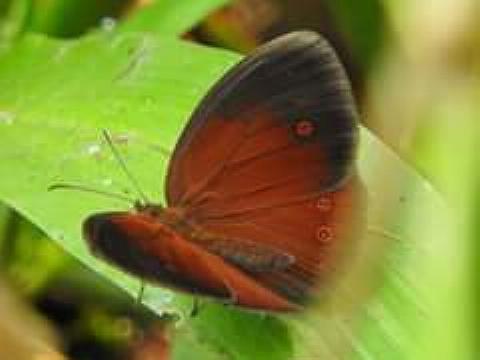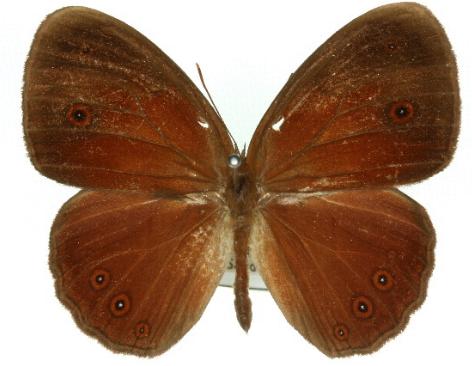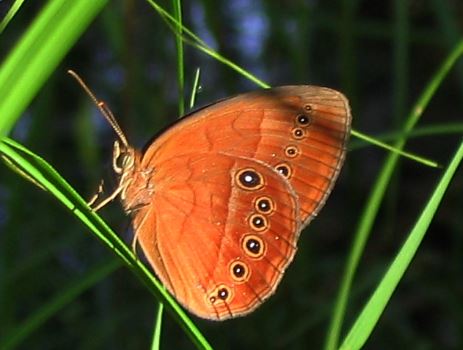
| Cedar Bush-brown SATYRINAE, NYMPHALIDAE, PAPILIONOIDEA | (donherbisonevans@yahoo.com) and Stella Crossley |

(Photo: by Tom Frisby, Fogg Dam, Northern Territory, courtesy of Steve Dodge)

| Cedar Bush-brown SATYRINAE, NYMPHALIDAE, PAPILIONOIDEA | (donherbisonevans@yahoo.com) and Stella Crossley |

(Photo: by Tom Frisby, Fogg Dam, Northern Territory, courtesy of Steve Dodge)
These Caterpillars are brown with stripes along the body. The caterpillars have pale brown hairy heads which have a pair of pointed horns, and a smaller pair of horns on the tail. The caterpillars grow to a length of about 4 cms. They feed on various coarse grasses ( POACEAE ), such as :
The caterpillars usually feed nocturnally, and initially rest by day under the leaf on which they are feeding, Later instars rest in the daytime at the base of the foodplant.
The pupa is brown and is attached to the foodplant head down by cremaster and girdle.

The adult butterflies are reddish ("Cedar") brown, with two to four small white eyespots on each forewing, and three to five on each hindwing. Underneath, the butterflies are similar to their upper surfaces, except that a dark edged pale band extends across each wing.

The females are similar to the males, only they are larger, paler, have more rounded wings, and have no sex brand. They have a wingspan of about 4 cms.
The eggs may be either green or yellow, and are roughly spherical. They are laid singly on the underside of foodplant leaves, and have a diameter of about 1 mm.
Various subspecies are found in
The subspecies sirius occurs in Australia in
Further reading :
Michael F. Braby,
Butterflies of Australia,
CSIRO Publishing, Melbourne 2000, vol. 2, pp. 474-475.
Michael F. Braby,
Morphology of the Early Stages of Mycalesis Hübner
(Lepidoptera: Nymphalidae: Satyrinae) From North-eastern Australia,
Australian Journal of Entomology,
Volume 33, Issue 3 (August 1994), pp. 289–294.
Johan Christian Fabricius,
Historiae Natvralis Favtoribvs,
Systema Entomologiae (1775), p. 488-489, No. 201.
 caterpillar |  butterflies |  Lepidoptera |  moths |  caterpillar |
(updated 7 May 2008, 27 September 2024)